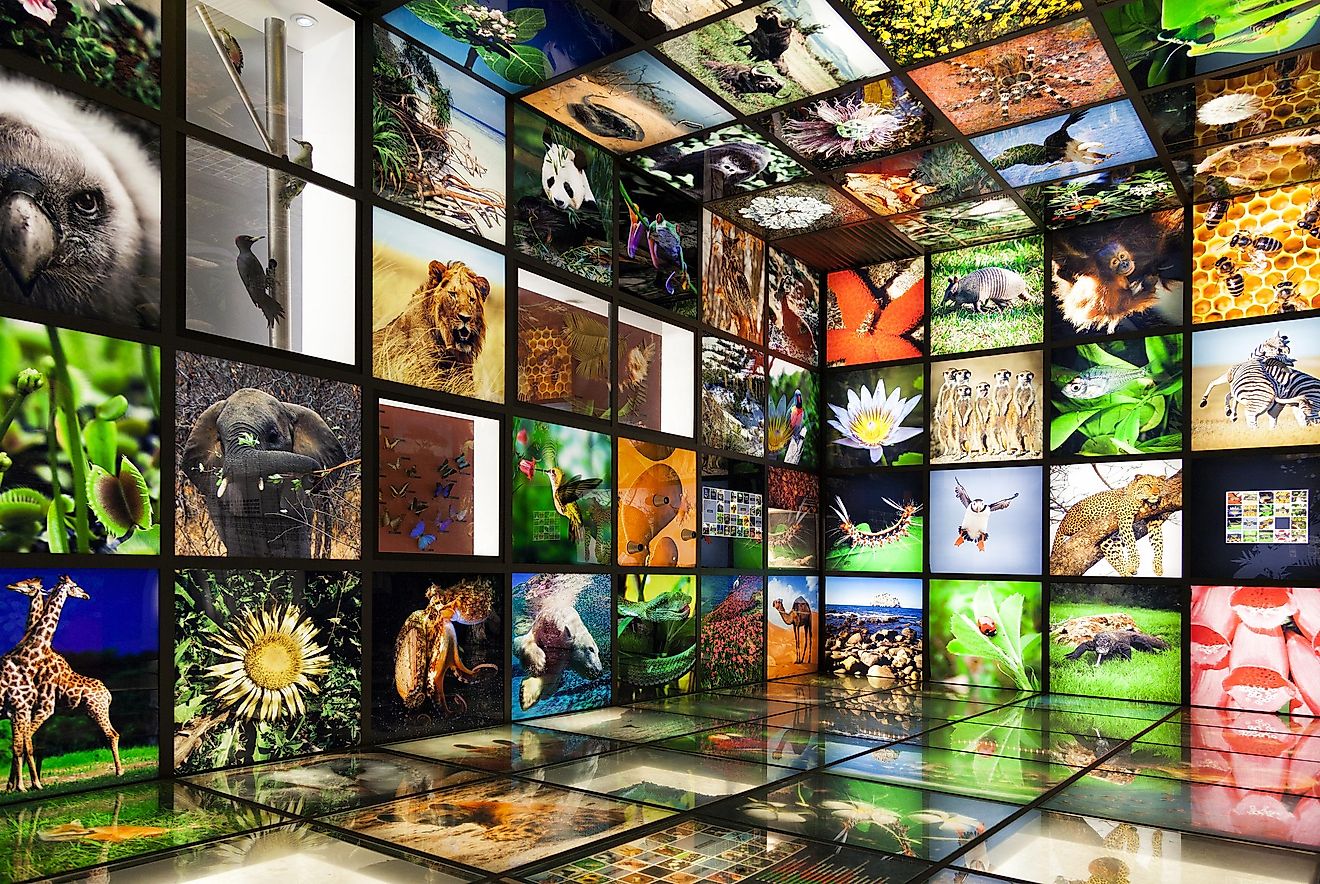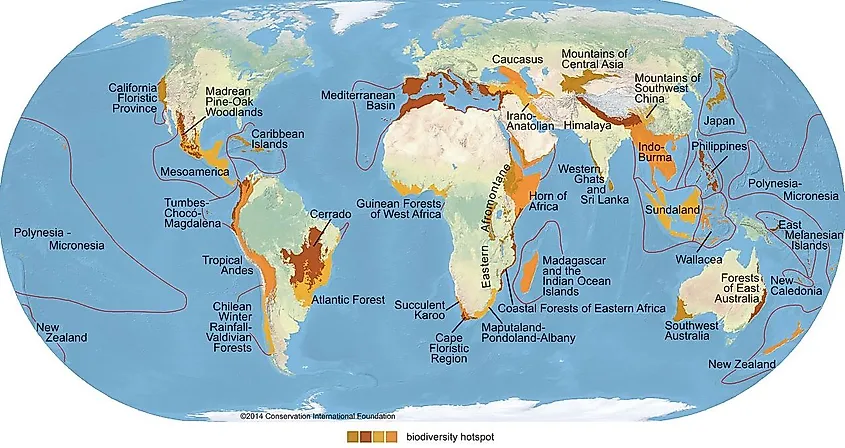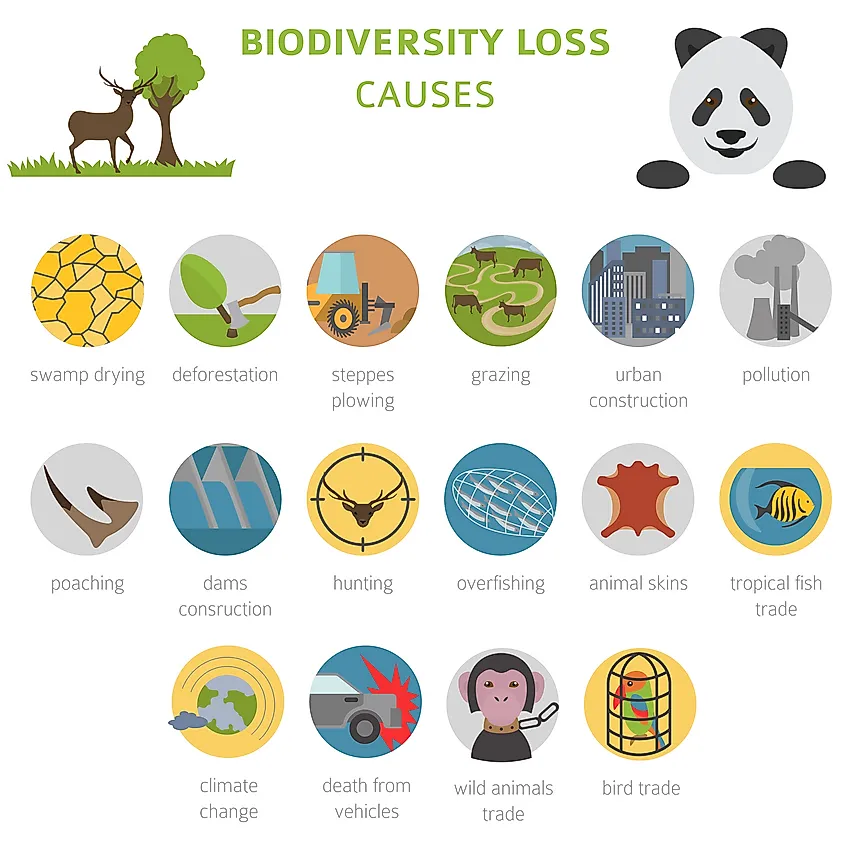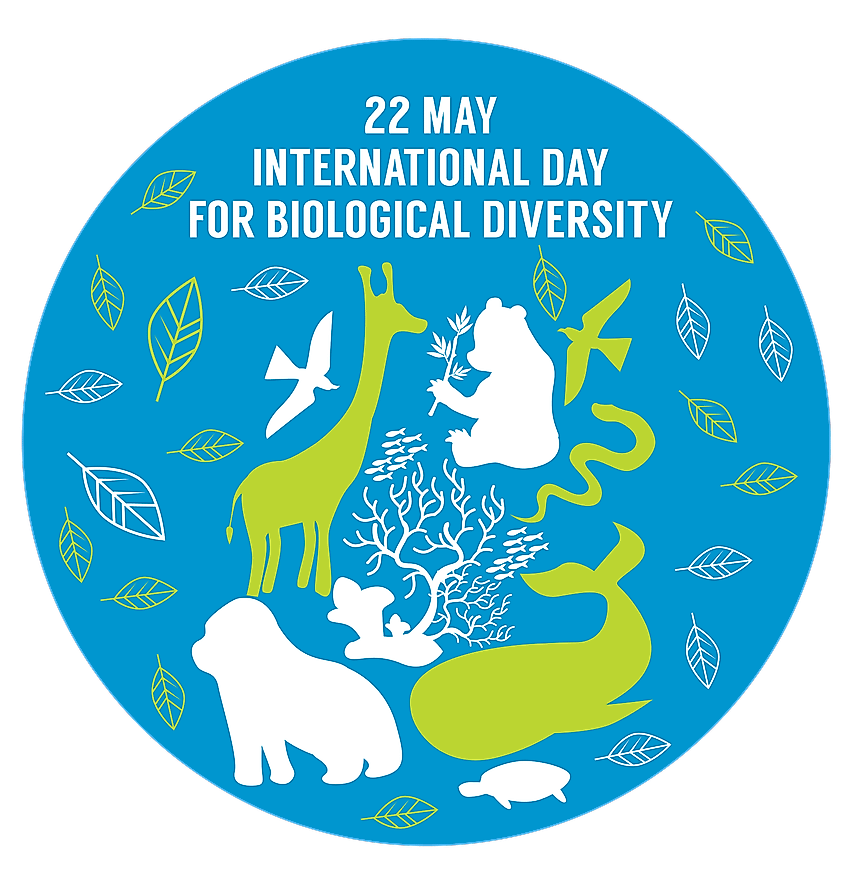What Is Biodiversity?

- Biodiversity is the term used to describe all types of life and all organisms in the natural world
- Humans are the number one threat to biodiversity, especially when it comes to climate change
- A change in habitat, a change in the climate, and a decrease or influx of any one species are the three main factors which determine biodiversity
The Term
Biodiversity is the term used to describe all types of life – that is to say all the organism in the natural world. This includes everything from animals to plants, insects, fungi and microorganisms. Learn about some of the important aspects associated with the term:
Contents:
- Importance Of Biodiversity
- Biodiversity And Ecosystem Stability
- Factors Contributing To Biodiversity
- A Biodiversity Hotspot
- Measurement Of Biodiversity
- Biome With Highest Biodiversity
- Threats To Biodiversity
- Biodiversity Loss Due To Climate Change
- Biodiversity Loss Due To Invasive Species
- Effect Of Biodiversity Loss On Humans
- Conservation Of Biodiversity
Importance Of Biodiversity
Biodiversity is important for a few reasons. The connectedness of ecosystems and biomes means that all organisms in any given system must work together and balance each other in order to maintain a healthy system. Biodiversity works in much the same way, with each organism and each ecosystem working together as part of one larger living system.
So what does biodiversity mean more specifically, and why is biodiversity important to ecosystems? Having a biological system that is diverse ensures that that system runs smoothly, is at peak productivity, and is also less susceptible to collapse or external force which may threaten the system’s balance. Each ecosystem relies on various parts and factors for it to work smoothly.
Biodiversity And Ecosystem Stability

Diversity is essential to the smooth running of any ecosystem. There are multiple examples within any region of each category of insect, bacteria, herbivore, omnivore or carnivorous predator. When an ecosystem is not diverse, meaning there are very few different plants, animals or bacteria within that system, one change, or removal of any given part, can spell disaster and a complete collapse of the system. Diversity helps maintain balance and prevent against harm.
Factors Contributing To Biodiversity
There are three main factors which can affect biodiversity. They are: a change in habitat, a change in the climate, and a decrease or influx of any one species. These factors can be affected naturally, or by human influence. For example, disease may affect one particular species in an ecosystem and throw off the balance in that area. If all the wolves in the system get sick and many die off, there will be an increase in rabbit population, which will then mean certain vegetation will be decimated. A change in climate can affect the growth of plants, increasing some or decreasing the likelihood of survival for others. It similarly can cause harm to animals in that system.
A Biodiversity Hotspot

A biodiversity hotspot is any area which is both highly diverse and rich in organic life, but also at risk due to human activity. Usually these are areas which have high biodiversity, but which are being destroyed for human habitation or development.
Measurement Of Biodiversity
Biodiversity is generally measured in terms of density or richness. This is calculated by accounting for the number of each species within a given area. By analyzing how many individuals of that species exist in a certain region, you can determine how dense that population is. This is also used in relation to a species evenness, ie how close in numbers each species is to each other. Evenness is the technical way to measure whether or not a system is ‘in balance’ by comparing the evenness of various species in a particular ecosystem. Biodiversity can also be measured on a genetic level.
Biome With Highest Biodiversity
Tropical forests are known to be the most highly diverse biome on the planet. Rainforests have the greatest species diversity throughout various continents, with most containing a wide variety of both plant, animal and insect life. Species diversity tends to be higher in warmer climates, whereas cold climates generally have a low diversity level.
Threats To Biodiversity

There are a number of threats to biodiversity, which stem from the three factors which effect biological diversity in general. Many of these threats are brought on by humans. Deforestation is a large problem when it comes to biodiversity loss. The cutting down and clearing of forests and woodlands has lead to a huge loss of habitat for many species around the world. It also instantly reduces the level of diversity of vegetation in that given area. Similarly, overexploitation, or poaching, wildlife trade, pollution and climate change all have negative effects on the diversity of organic life on planet Earth. When humans are not careful, or conscious of their impact on an environment, they often negatively effect it.
Biodiversity Loss Due To Climate Change
Pollution, and climate change caused by this pollution, is killing off various species and reducing habitats around the world. From deforestation to the melting of the icecaps and permafrost, climate change is the number one threat to biodiversity. As temperatures increase or fluctuate in various ecosystems and regions, animal populations are forced to adjust as best they can. Often, this is detrimental to a species population or causes changes in habits or habitats for that species. A prime example of this is in the polar regions where polar bears have been forced further and further south as the ice they live on melts. Their hunting ground diminishes, making it increasingly difficult for them to catch prey such as seals. Not only does this effect the polar bears directly, but it poses a risk to the entire ecosystem, as predators decrease and seal populations grow. In time, this sort of chain react can cause an ecosystem to collapse entirely.
Biodiversity Loss Due To Invasive Species
Invasive species are any species which enter an ecosystem or biome from which they are not naturally found. Examples of this exist all over the world, with varying degrees of destructiveness. In Australia, rabbits were introduced by humans, and with very few natural predators, they threatened to overrun the continent, so much so that huge fences were erected in order to curb their habitats. Invasive species can be either animal or plant, and run the risk of dramatically tipping an ecosystem off balance. An addition of an unknown predator can decimate prey species, and threaten the populations of naturally found predators who then have to compete for the same food source. Invasive plants can kill off existing plants, block their growth, or even strangle out existing vegetation in extreme cases.
Effect Of Biodiversity Loss On Humans
The loss of biological diversity can lead to the breakdown of any given ecosystem or biome. While this is often associated with species extinction, it can also mean any major imbalance within a given biological system. When biological diversity decreases, an ecosystem or biome will usually start to break down. This can further cause potentially irreversible damage to an ecosystem. One of the most dangerous imbalances is climate change. Climate change is both a cause of biodiversity loss, and a result.
As trees are being cut and cleared in large areas, species are losing important habitats, and others are left open to the elements and predators. More than this, the removal of certain vegetation can cause soil to erode or lose important nutrients. Similarly, tree cutting can directly affect climate change as trees and other vegetation naturally convert carbon dioxide into oxygen, effectively recycling air for humans and animals. Biodiversity also means that crops are less susceptible to disease or natural disasters.
Humans use biodiversity in agriculture in order to prevent famine and ensure healthy crops season after season. If a farmer plants only one type of crop, it is highly at risk. Any disease which may hit that crop can easily wipe out an entire planting. By diversifying, farmers are able to prevent this potential disaster. Not only does diversifying crops help prevent full crop wipe outs, such as in the case of the Irish potato famine, but it also helps the keep farm plots rich. Different vegetation requires different minerals and vitamins from the soil, so diversifying and rotating crops can help the soil to remain fertile even when in constant use. In this way, biodiversity can be directly translated to human life.
Conservation Of Biodiversity

Due to the ongoing and growing risk to biodiversity, there have been numerous conservation efforts put in place to try and curb diversity loss. Much of these efforts exist in hotspot locations and ecosystems deemed at risk. Conservation efforts can be in many cases greatly effective. Given time, many biomes and ecosystems can recover, and stabilize. This can be seen where systems are affected by poaching or hunting. When areas or species are then protected, the population can usually recover in time. Similarly, conserving green spaces and other natural areas from clearing, development or agriculture can ensure that the natural landscape of any given biome, and thus its diversity, remains intact.











